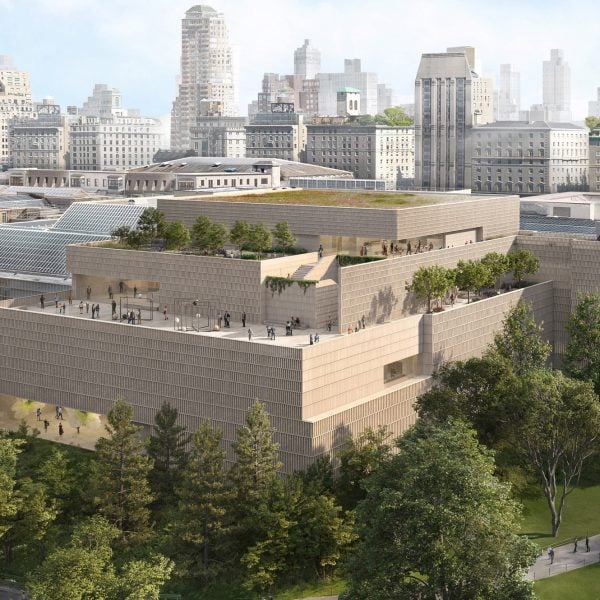The Metropolitan Museum of Art and Mexican architect Frida Escobedo have released designs of a limestone-clad expansion to the Tang Wing, the first wing designed by a woman in the museum’s 154-year history.
The design comprises the renovation and expansion of the pre-existing modern and contemporary wing of The Metropolitan Museum of Art (The Met), which is notched into the southwest corner of the 21-building complex.

Funded largely by Oscar L Tang and HM Agnes Hsu-Tang, the expansion will increase the wing’s gallery space by 50 per cent and is the first to be designed by a woman in the museum’s history.
“Our goal has been to create a building that fully meets the needs and aspirations of The Met, weaving together vital connections between the Modern and Contemporary Art galleries and other areas of the Museum and at the same time expressing the special significance of the Tang Wing’s place in the city,” said Escobedo

“The wing is in New York, yet of the world; it reflects the global nature of this great collection and also draws inspiration from The Met’s unique surroundings,” Escobedo continued.
Renderings show a building comprised of five, tiered floors wrapped in a limestone “architectural screen”. Large, rectangular windows punctuate the exterior intermittently, placed strategically to reduce solar gain to protect artwork inside.
Outdoor terraces and garden are located on top of the fourth and fifth-floor setbacks and will be coupled with improvements to ground-floor landscaping of the surrounding Central Park.
Inside, the studio will increase accessibility between spaces, which is currently hampered by its layout of elevators, stairs, restrooms and mechanical spaces.

Seven different architectural studios have worked on the complex since the late 19th century, and Escobedo will respond to the historic context through material and massing.
Its facade, or limestone “celosía”, will pay homage to a “universal architectural language” while responding to sunlight and integrating with the surrounding architectural design by Richard Morris Hunt and McKim, Mead and White, according to The Met.
The design’s setbacks take cues from the Roche Dinkeloo 1971 master plan for The Met, which called for “solids and voids”, according to the museum.

“Comprising a three-story base with a recessed fourth floor and a further setback fifth floor, the scaled facade takes its cues from the Roche Dinkeloo visionary 1971 master plan, which calls for a rhythm of solids and voids, as exemplified through the use of glass and limestone in the seven buildings Kevin Roche designed,” said The Met.
The interior will feature ceiling heights ranging from 11 to 22 feet (3.3 to 6.7 metres) to accommodate large-scale pieces, as well an additional elevator, more entry points and “better” circulation routes to improve wayfinding for visitors.

The release follows the announcement of Escobedo’s selection for the project in 2022 after it had to drop a design by David Chipperfield Architects due to growing costs and lack of funding.
The building is set to open in 2030.
Recently, The Met showcased a Sleeping Beauties exhibition spanning four centuries of fashion and added an interactive children’s space designed by KOKO Architecture
The images are by Filippo Bolognese

